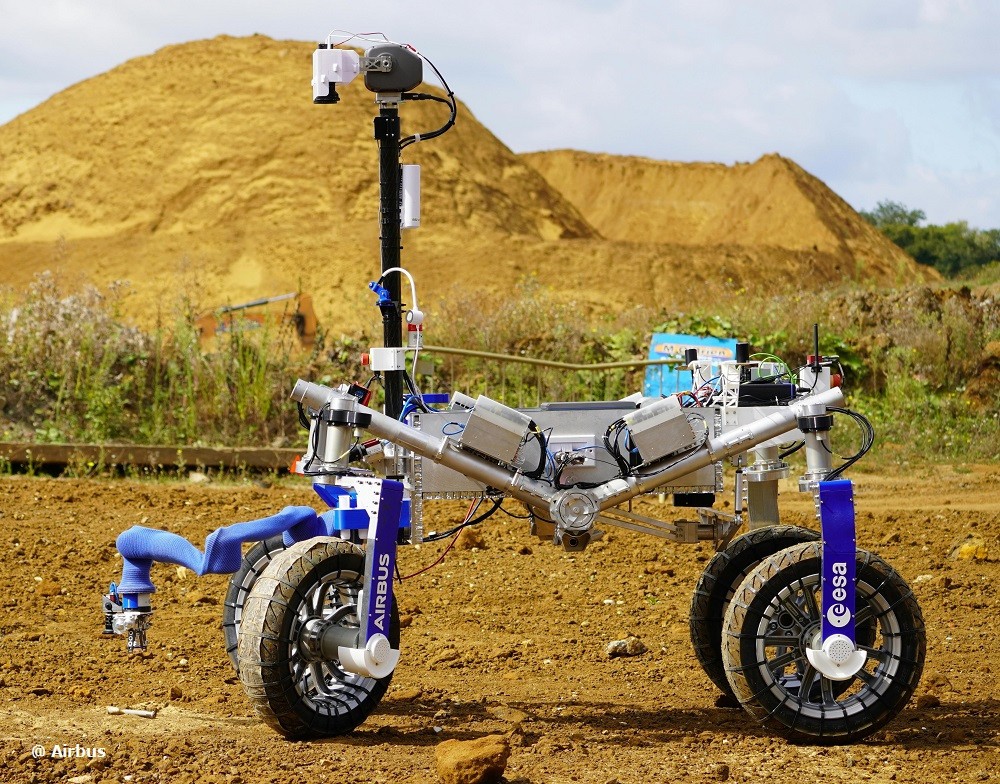New round of Sample Fetch Rover field tests completed successfully

In mid-October, engineers from the European Space Agency (ESA) and Airbus teamed up in Stevenage, the United Kingdom, to carry out a new round of field tests for the SFR (Sample Fetch Rover) robotic surface vehicle.
The SFR rover, now nicknamed Codi, was developed as a testing platform for the Mars Sample Return (MSR) mission, with the goal of retrieving the samples previously extracted from the surface of Mars, collecting them, and storing them. Although the SFR component of the MSR mission was canceled, maintaining, testing, and developing innovative and precise navigation and collection capabilities for a rover that can function without human intervention is essential for possible interplanetary and lunar exploration in the future, which is why the ESA decided to continue with this Airbus-led project, in which GMV is participating.
These tests were conducted over the course of two weeks and introduced a novel feature: a robotic arm integrated into the rover for the first time that autonomously took on the challenge of collecting the thin 15 cm long sample tubes left on the ground, simulating the collection of samples on the surface of Mars.
GMV is in charge of the design and development of the project’s VBDS (Vision Based Detection System). One of the most critical systems in the rover, VDBS is essential for finding the sample tubes. It integrates artificial intelligence and image processing techniques that allow it to accurately detect and estimate the position of the tubes on the surface of Mars and then capture them with the robotic arm. To do so, VBDS processes images provided by the rover’s stereo navigation camera and the monocular camera mounted on its robotic arm.
During the testing, the rover was able to autonomously move approximately 300 meters and get around various obstacles before parking near a sample tube. One parked, the stereo navigation camera at the top of the mast detected the tube with samples and estimated its position in relation to the rover. The robotic arm then began a complex choreography to take new images of the sample tube at close range, estimate its position more precisely, capture it, and store it.
These successful tests made it possible to explore the autonomous navigation system in depth and, crucially, to combine it with the robotic arm and carry out the first complete process of pinpointing, identification, and collection of sample containers, all without human interaction.
Now that the tests are complete, the industrial team is analyzing the data and has started to implement the updates needed for the next round of testing, which will take place in mid-2024.